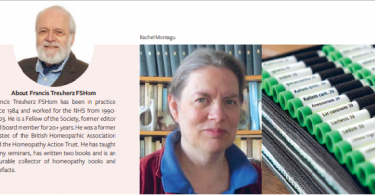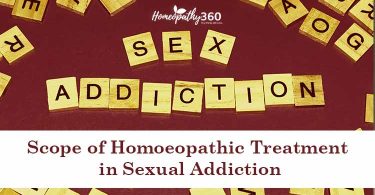Abstract: Homoeopathic System of medicine solely operates on the Principle of Individualization. The “Law of Similia” is applied for purpose of selection of remedy to cure diseases. Therefore, there can’t be any specific medicine for the treatment of diabetes. However, the experiences of various stalwarts allows us to evolve a group of medicines which can be effectively used for the treatment of diabetes. Nosodes are group of medicines prepared from the disease products of animals or human beings, after potentisation and can be used for both prophylactic and curative purposes. Bowel nosodes are the medicines prepared by attenuating the cultures of non-lactose fermenting bacilli of intestinal flora. This article emphasis on approach of using ‘Nosodes’ and ‘Bowel nosodes’ in managing diabetic cases.
Keywords: Diabetes, nosodes, bowel nosodes, homeopathy.
Introduction: Dorland’s Illustrated Medical Dictionary defines NOSODE as, ‘any disease product used as remedy’.[1] Since Hippocratic era, pus phlegm, urine and other discharges of one patient were used as source material for medicine for same or other person. Hering originated the method of using a miasmatic agent as a basis for a remedy and it was he who coined the term “nosode”. The Greek word ’Noso’, is a prefix which is added to give the idea of a disease indicating its morbid root. This term is also connected to Latin word “noxa”, the root of the term noxious or damaged. This implies the use of potentially dangerous noxious materials as a basis for a potentized remedy. The applicability of nosodes in homoeopathic practice dates back to the long past and has invited paradoxical views. While J.C.Burnett, H.C.Allen, Swan, D.M. Foubister, Edward Bach and John Paterson etc. are vociferous in support of the nosodes, for others, the use of nosodes in an enigma.[2]
Bowel Nosodes:
These are the medicines prepared by attenuating the cultures of non-lactose fermenting bacilli of intestinal flora. The method of potentising the vaccines and giving them orally was taken up during 1920-21 by Edward Bach. Since proving of bowel nosodes has not been done, the homoeopathic physicians have developed the pictures of these medicines through careful clinical observations and bacteriological examinations.[3]
The patient’s sufferings from certain chronic diseases, when subjected to the culture of their stool, revealed that there existed a definite relation between the presenting symptomatology of the patient and the organisms present in the stool . Such organisms, when isolated, attenuated and admistratered to the patients exhibiting similar manifestations, positive and favorable responses were witnessed.[2] The potentised vaccine- the nosode prepared from culture of the organism can be considered to be a complex biochemical substance having the characteristics of the disturbed metabolism and thus to be similar to the disease and according to the law of similar, to have specific therapeutic power to restore balance , a condition of ease i.e., health.[4]
Bach’s observations of bowel nosodes similarity with Homoeopathic Doctrines:
1. Better results with minimum dose.
2. Better results are obtained by infrequent repetition of doses.
3. Reappearance of old symptom, following administration of a remedy, is a favourable sign.
4. Initial aggravation of symptoms, followed by improvement.
Indications, Key features of few important nosodes and bowel nosodes in Diabetes Mellitus:[2],[5]
1. Bacillinum:
Increased quantity of urine, urine pale with white sediments.
Has to wake up several times at night to urinate.
Great disposition to take cold- Keynote.
Irritable, morose, depressed, melancholic.
Great weakness.
2. Carcinocinum:
Clinically indicated in diabetes mellitus of heriditary origin or history of diabetes in family.
Constant change of symptoms, comtradictory and alternating symptoms.
Capricious appetite.
Thirst for large quantities.
Slow healing wounds.
Weakness and fatigue.
Itching undressing from, interrupted sleep.
Sleeps in knee chest position on right side.
3. Medorrhinum:
Appetite increased.
Constant thirst. Dreams of thirst.
Profuse and frequent urination.
Restlessness and burning pains in feet. Ameliorated by cold air.
Continuous prurutis. Aggravation by thinking about it.
Intense itching whole body, aggravated at night.
Fatigued easily.
4. Staphylococcinum:
Weakness of protective mechanism or debility due to overwork, worry, lack of proper food, etc..
Pyuria acoompanies all symptoms.
Useful in borderline diabetes.
5. Syphillinum:
Loss of appetite.
Extreme emaciation without any cause.
Pains increasing and decreasing suddenly and require frequent change of posture.
Washing mania.
Dreams of diseases.
Absolute sleeplessness.
6. Tuberculinum:
Great thirst.
Emaciation rapid and pronounced while eating well.
Intense itching in the body.
Nervous weakness and trembling.
Indicated in diabetes when symptoms are constantly changing and well selected remedy fails to improve.
Fatigue even after short walk.
Urine frequent, copious deposits, yellow reddish on standing, loaded with urates.
Extremely sensitive to music.
7. B. Gaertner:
Malnutrition is the keynote.
Malnutrition and prostration.
Marked emaciation.
Anal pruritis, pruritis vulva.
Burning of the urethra.
Vomits everything after taking sweets.
Somnambulism.
Abundant sweat at night.
Blood and mucous in urine.
Nervous restless hands and feet.
Nocturnal fears, night terrors.
General aggravation at night.
Hypersensitive to all impressions.
Prototype medicine- Mercurius Vivus, Phosphorus, Silicea
8. B. Morgan:
Keynote is congestion.
Glycosuria.
Dirty tongue, bitter taste in mouth in morning.
Frequent painful micturition, strong corrosive urine.
Mental depression and suicidal tendencies.
General aggravation: heat, night, washing.
>eating.
Prototype Medicine: Sulphur.
9. Proteus:
Keynote is Brain storm, Suddeness of complaints.
Pruritis vulva.
Voilent burning in urethra.
Lack of power in palm, hands numb in morning.
Numbness of feet cramps in legs.
Hunger pain not better with eating.
Burning in hands at night.
Itching in anus.
Rigid attitude, fixed ideas.
Emotional hysteria.
Intolerance to eggs.
General aggravation in morning when waking up, heat, sun, stormy weather while getting upstairs, drinking wine.
Prototype –Natrum muriaticum.
10. Sycotic compound:
Pale subjects having swollen face, premature graying of hair with pain.
Soles of feet swollen and painful at night.
Frequency and urgency of micturition.
Offensive and corrosive urine. Albuminuria.
Pruritis vulvae.
Cold sensitive.
Profuse perspiration during sleep.
Frequency and urgency of micturition.
Prototype- Thuja Occidentalis.
11. Bacillus No.10:
Frequent and profuse micturition.
Prurutis vulva, anal pruritis.
Craves sweets, chocolates, fish.
Anorexia.
Bad breath and spongy gums.
Wound healing delayed.
General principles for repetition of doses by Paterson:[4]
1. Should not be repeated unless the improvement ceases.
2. Higher the potency, less frequent should be the repetition.
3. In acute exaberation of chronic disease, potency between 30C and 1M can be given and must be repeated at intervals.
4. Potency above 1M can be given in single dose in acute diseases.
5. In advanced pathology, lower potencies like 6C should be administered.
Discussion and Conclusion: The nosode group characteristics are a signal to investigate the chronic miasms and map their signs and symptoms as well as looking closely for symptoms of the major nosodes and anti mismatic remedies. Over the years the use of nosodes as intercurrents has proved of assistance to constitutional treatment if used correctly. The effective use of nosodes has a great role in managing diabetes, may be used constitutionally or as an intercurrent. Further proving and researches should be promoted and encouraged to establish efficacy of nosodes specially bowel nosodes in management of chronic diseases including diabetes.
References:
1. Friel JP. Dorland’s Illustrated Medical Dictionary. Philadelphia: WB Saunders Company; 1974.
2. Nayak Chaturbhuja, Nayak Debadatta, Roja Varanasi. An Update on Bowel Nosodes with comparisons. New Delhi: B.Jain Publishers(P) Ltd; 2015
3. Cummings S. History and Development of the bowel nosodes. Br Hom J 1988; 77(2): 72-77
4. Paterson J. The Bowel Nosodes. Br Hom J1950; 40(3): 153-163
5. Disease monograph-4 on Diabetes Mellitus by Central Council for Research in Homoeopathy, New Delhi.





